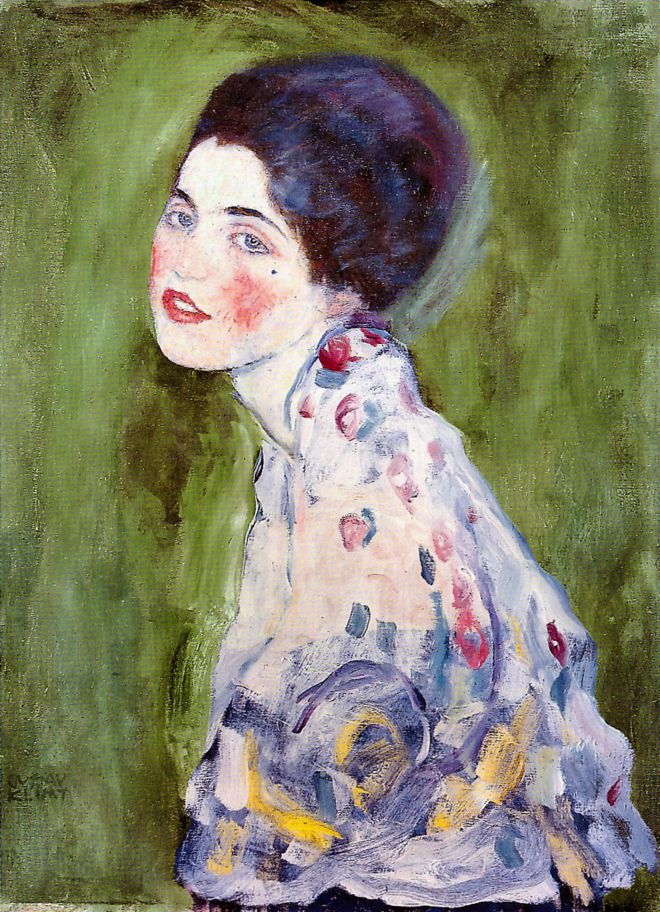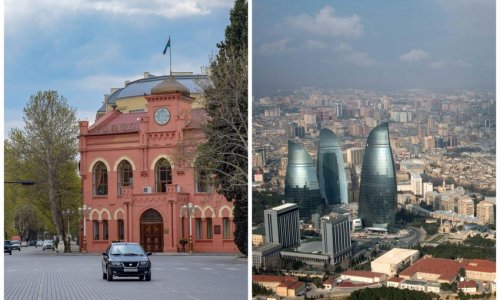Nearly 20 years ago a valuable portrait was stolen, in bizarre circumstances, from a gallery in the northern Italian city of Piacenza. Until recently there appeared to be little prospect of it ever being recovered - but then police received some perplexing new information, and they now think it will be back in the city within weeks or months.
Carabiniere Sgt Maj Salvatore Cavallaro was on a ladder looking out on to the roof of Piacenza's Ricci-Oddi gallery through a partially open skylight.
"It doesn't fit," he shouted to his colleagues below, as he compared the size of a heavy gilded frame on the roof beside the skylight with the narrow opening. "No way the thief could have fished the painting from up here."
You could just about imagine that a thief on the roof had hooked the frame on a line, and pulled it up to the ceiling - but that would have been no use. This was clearly not the exit through which the portrait by the Viennese turn-of-the-century artist Gustav Klimt had left the building.
So why, on 22 February 1997, was the frame on the roof?
Ten months earlier the Portrait of a Lady had been involved in a drama of a different kind, thanks to a sharp-eyed 18-year-old art student, Claudia Maga.
While flipping through The Complete works of Gustav Klimt she had noticed a strong resemblance between The Lady and another Klimt painting, Portrait of a Young Lady, that had not been seen since 1912.
"The Young Lady had a scarf and a hat but they both had in common the same glance over the left shoulder, the same smile and the same beauty spot on the left cheek," Maga says.
She had photocopied and enlarged the two small photographs in the book, had drawn the profile of the Young Lady on tracing paper and put it on top of The Lady.
"And that was it," she says. "The Lady was concealing another portrait beneath it, the only double portrait Klimt has ever painted."
Maga got the gallery's former director, Ferdinando Arisi, interested in her theory. A few weeks later he picked her up from art school, drove her to the gallery, and removed the portrait from its frame. Wrapping it in brown paper they headed for the local hospital, where sure enough a series of X-rays revealed the dim shadow of the earlier work beneath the surface.
The story behind the painting was the next surprise. Klimt had fallen madly in love with a young girl from Vienna, it was said, who had quickly become his muse. Then, when she suddenly died, he painted over her portrait to forget the pain of his loss.
Piacenza was in ecstasy.
A special exhibition was arranged to show off the painting in a new location close to the city hall. At the same time, the gallery was to be renovated, and many paintings started to be packed and moved into storage. Workers were coming and going. And when the Klimt itself went missing, no-one immediately realised. The gallery staff assumed it had been removed deliberately as part of the preparations for the new exhibition.
"Then we received a phone call from the gallery," Sergeant Cavallaro says. "They muttered, 'We can't find The Lady.'"
When he arrived on the scene, he says, "The doors of the gallery were open, people were going in and out, and the security system was switched off."
Faced with the mysterious theft and no leads, the police were stumped. They asked a notorious local art thief for advice, but even he was unable to put them on the right track.
Little progress had been made when, on 1 April 1997, border police intercepted a package on the Italian/French frontier at Ventimiglia. It was addressed to the former Italian PM Bettino Craxi, who was at the time hiding from the law in Hammamet, Tunisia. When they opened it, they found a Klimt.
Stefano Fugazza the then director of the Ricci-Oddi gallery thought it was an April Fool's joke, but Arisi, his predecessor, was optimistic and keen to get to Ventimiglia straight away.
"We drove madly to Ventimiglia," Fugazza writes in his diaries, "but the only thing we came back with was a speeding ticket."
The painting looked convincing, but the smell of the oil paint was fresh. It wasn't the original, it was a high-quality forgery.
There is another strange paragraph in Fugazza's diary.
Days before the painting disappeared, he writes, he had contemplated the idea of talking to the carabinieri and, with their permission, pretending that the portrait had been stolen, in order to draw more attention to the forthcoming exhibition.
"But now The Lady has gone for good," he adds, "and damned be the day I even thought of such a foolish and childish thing."
Soon afterwards Cavallaro was assigned to other work and the case was closed.
It remained closed until 2013, when the carabinieri made a fresh attempt to identify a fragment of a fingerprint found on the frame - in vain, as it turned out.
But last summer a local journalist arranged a meeting between the new carabiniere investigator, Col Luca Pietranera, and an art thief he had got to know in one of Piacenza's many bars. And the thief turned out to be a mine of information.
The thief told the colonel that he was the man the original investigators had asked for advice, back in February 1997, as they searched for the perpetrator of the theft. He then confessed that he was, in fact, the man who had carried out the theft and left the gilded frame on the roof as a coup de theatre.
Then he explained that what he had stolen that day was in fact a copy.So what had happened to the real painting?
"Oh well, I stole it months before anybody had noticed," the now elderly thief proudly tells me, when we meet in a cafe in Piacenza.
A few months after the discovery of the double Klimt, around November 1996, he just walked into the gallery and replaced the original with a copy, he says.
"Nobody blinked, nobody noticed. It was an easy and carefully planned inside job."
He is now helping the carabinieri with their inquiries into a number of crimes, in return for immunity from prosecution.
But why was it necessary to steal the copy, I ask the chain-smoking thief.
This was done, he says, to hide the fact that it was a copy. The special exhibition would doubtless have brought Klimt experts from far and wide, one of whom would surely have spotted it was a fake - and this might have been disastrous for the gallery insider who had assisted with the theft.But the thief's most startling claim is that the painting will be returned by the 20th anniversary of the theft (or more accurately, the theft of the copy). In other words, by February next year.
How he can know this is unclear. After all, by his own account, the painting was long ago sold by a dealer for a large quantity of cash and cocaine. But he confidently makes this prediction - and the carabinieri say he may well be correct.
They are currently in contact with police in another European country where the painting is thought to be held in a private collection.
The only thing they are not completely sure of is whether the painting they are now on the trail of is the original, or a copy. This, they say, they will only be able to confirm when they have it in their hands.
Where are the copies?
The forgery that hung, unnoticed, in the gallery for three months is lost - it is described by the art thief as "high-quality" and is believed to have had two layers, like the original, with the Lady painted over the Young Lady
Carabinieri assume the forgery found by border police in Ventimiglia is somewhere in the basement of the Ricci-Oddi gallery - it is also thought to be a double portrait
When the gallery held a news conference to announce the results of the fruitless Ventimiglia escapade, they displayed a poor-quality copy of the portrait, which is now held by police in Bologna
Another poor-quality replica surfaced in a second-hand shop in Piacenza
(BBС)
www.ann.az
Follow us !











